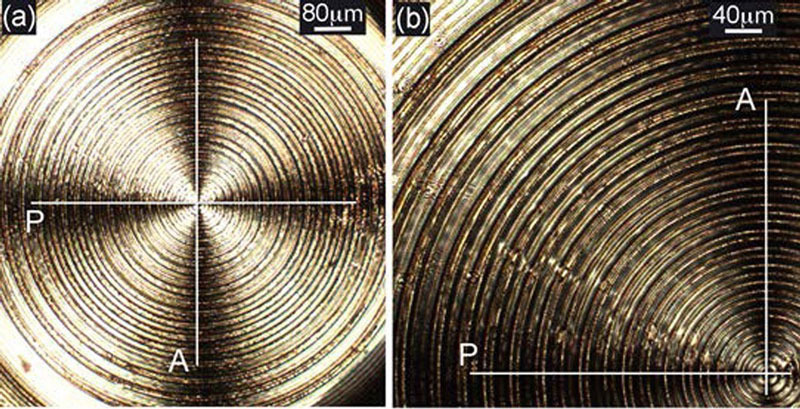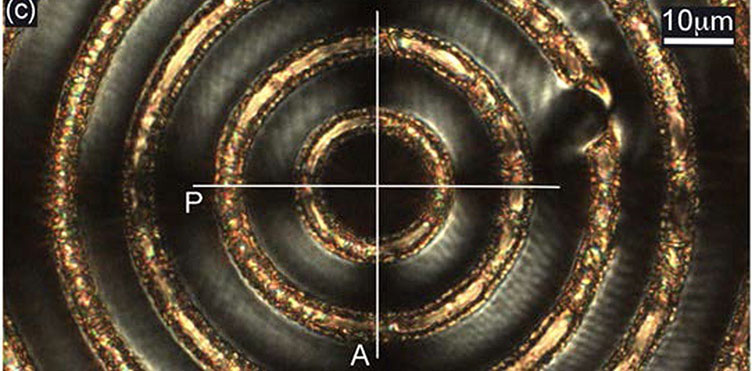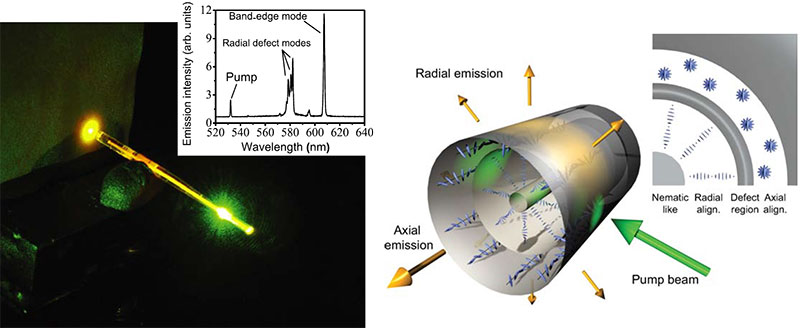Soft-Matter Applications

Tunable photonics

Active soft-matter composites
The study of laser emission properties in ordered and periodic systems has known an extraordinary revival in the last years; even because of the remarkable development of experimental techniques which allow the design of photonic crystal structures whose dimensions fall in the nanoscale range. Surprisingly, active random media repeatedly demonstrated to be suitable candidates for obtaining diffusive laser action, mainly based on the resonant feedback mechanisms in multiple scattering, thus eliminating the need for an external cavity, like in the case of regular lasers. Light localization and interference effects which survive the multiple scattering events have been invoked to explain the random lasing observed in many exotic and complex systems. The study of laser action extends from periodic highly ordered materials (i.e., photonic crystals) to completely disordered systems such as powders, suspensions of microspheres, or strongly scattering materials

Biocompatible soft-matter

